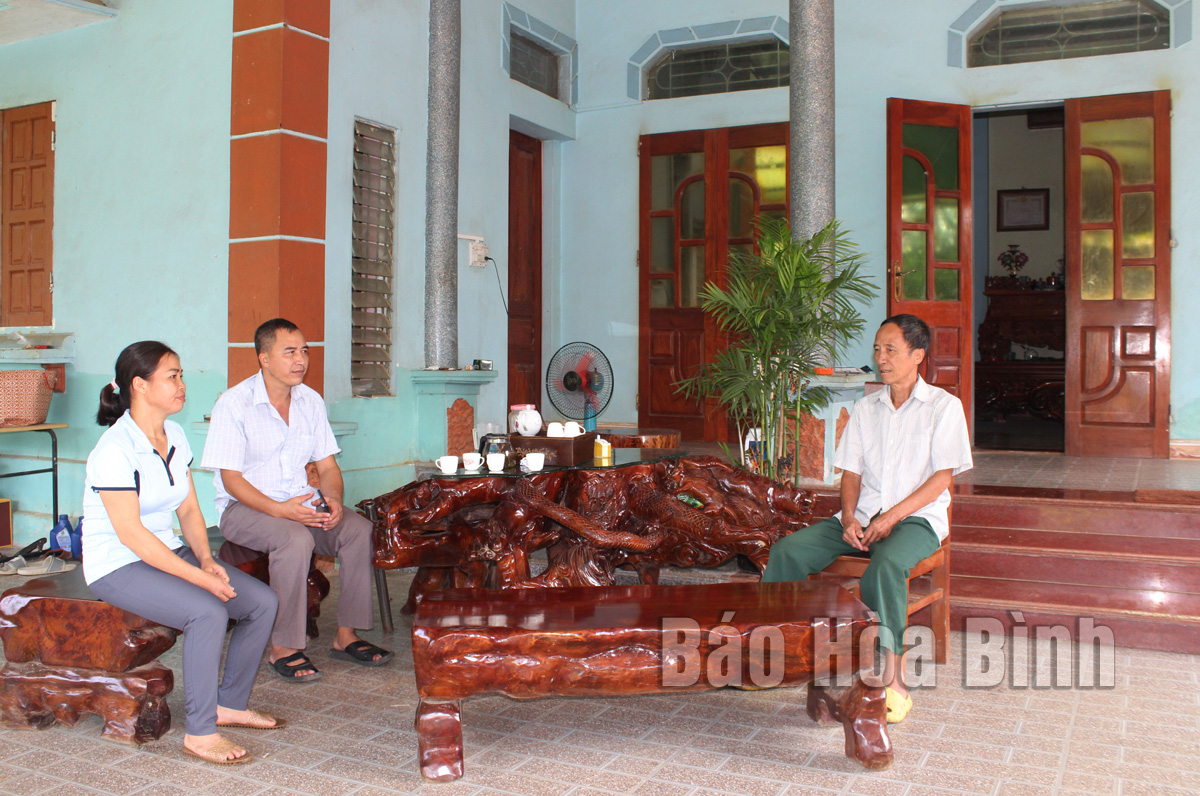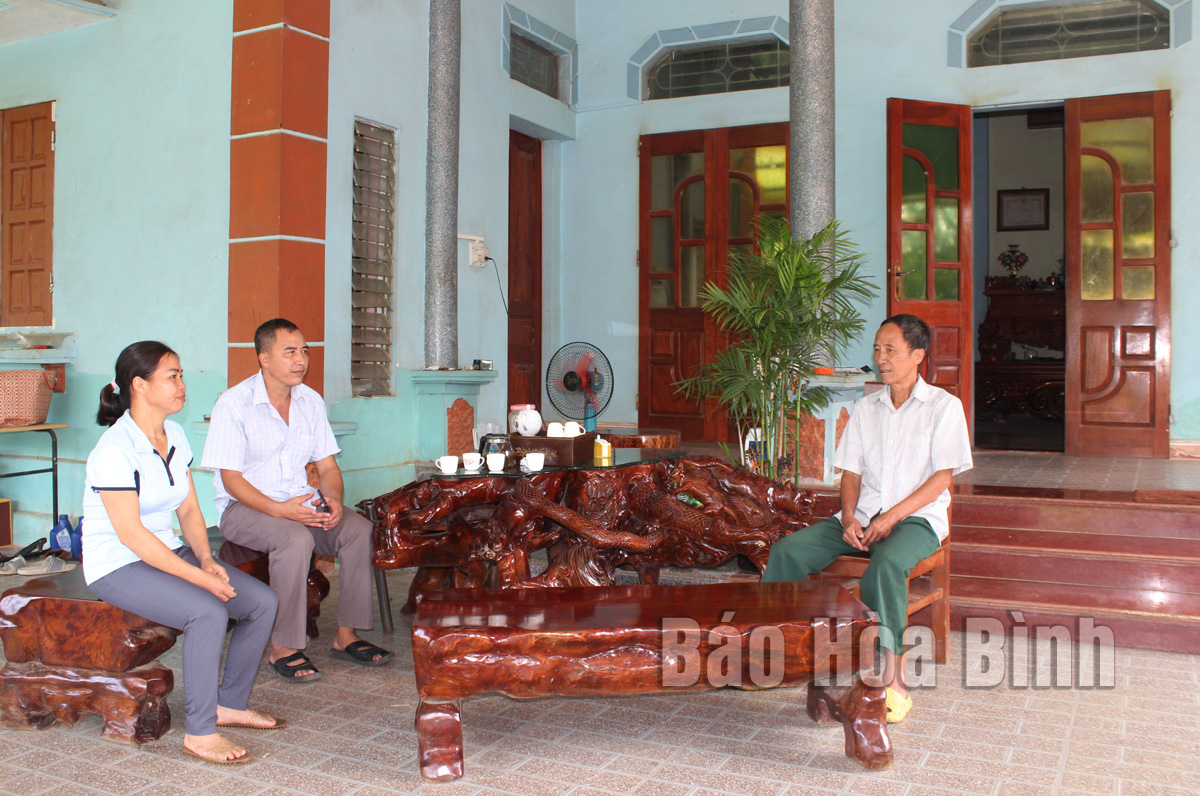
(HBO) – Bu Cham, formed from a merger of Phu Chau and Bu Cham villages, cover nearly 800 hectares. The village has 157 households with nearly 700 people, of which the Muong ethnic group accounts for 75% of its population. In addition to natives, 20% of the population are residents of Hanoi’s outlying districts suburban who settle here.
The family of Do Van Truong who resides in Bu Cham village, Hoa Binh city’s Thinh Minh commune, is recognised as an outstanding cultural family.
As its economy largely relies on agricultural production, Bu
Cham village is developing a number of crops and forming a concentrated
production area for high economic efficiency. Dong rieng (Canna edulis Ker –
Gawl) is the main crop with an area of 175ha and an average yield of 45 tonnes
per hectare.
After deducting all expenses, farmers can earn about 70 million VND (2,810 USD)
per year for each hectare of dong rieng.
Besides dong rieng, the village also engaged in horticulture, mainly pomelo and
herbal plants such as ca gai leo (Solanum procumbens). Currently, it has 20
hectares of pomelo and 16 hectares of cassava. Households earn about 300
million VND in profit for each hectare of pomelo.
Thanks to investment in machinery and equipment, some households
can earn about 600 VND per year from each hectare of ca gai leo.
Currently, there is a vermicelli production facility, a broom-making workshop,
some groups engaging in making bamboo and rattan products and two groups on construction
in the locality.
Other side trades create jobs for over 100 regular workers and many seasonal
ones with an average income of between 5and 6 million VND per month.
Locals’ living standards have improved over the years. Last year, the per capita
income of the village reached 55 million VND. About 65% of households became
better off and there were only two poor households.
Nguyen Vu Luc, head of Bu Cham village, said that people's livelihood has been
improved. The movement on new-style rural area building, especially the
"Clean house, beautiful garden, fresh environment, civilised alley",
was enthusiastically responded by local residents. Locals have donated land and
contributed working days to build roads and works in the village.
Health and education issues are also taken care of, he said,
adding that over 90% of the households meet the standards of cultural families. Last year, Bu Cham village took the lead in the emulation movement of 14
hamlets of Thinh Minh commune, and the village’s party cell was honoured as
excellently fulfilling its task./.
The emulation movement "Hoa Binh joining hands to build new-style rural areas” has been widely spreading, becoming a driving force that motivates the localities to renew rural landscapes and improve the material and spiritual lives of the residents. In this movement, the people play a central role-both as the main implementers and direct beneficiaries of its outcomes.
In response to the global digital revolution, Hoa Binh Newspaper is transforming itself into a modern and multi-platform media hub, blending cutting-edge technology with a restructured newsroom and a new generation of tech-savvy journalists.
Hoa Binh province’s Association of the Elderly recently held a conference to review the project on expanding the inter-generation self-help club model until 2025.
In a move to implement Resolution No. 57-NQ/TW, issued on December 22, 2024 by the Politburo, which targets breakthroughs in science-technology development, innovation, and digital transformation, the Hoa Binh provincial Department of Health has issued a plan to roll out the "Digital Literacy for All” campaign within the local health sector.
An Nghia Commune (Lạc Sơn District) is one of the communes that achieved the tha standard of the national new rural area in 2018. Entering a new development phase, the commune is now trying to meet the criteria for the advanced new rural development. With the strong political will and the public consensus, the commune is gradually overcoming the challenges to reach this goal, aiming for the sustainable development.



